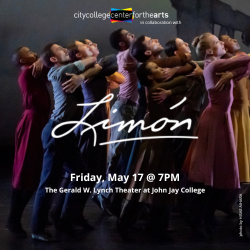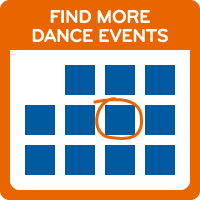Dance Ambassadorship (Junior Committee Blog)
Saturday, May 11, 2013
Dance Ambassadorship (Junior Committee Blog)
By Erica Frankel, Marisa Ballaro, Alexander Leslie Thompson, Alexandra Sasha Pinel, Mercedes Searer
This year, with an eye towards engaging communities outside of dance, the Dance/NYC Junior Committee has established a think tank to consider relationship-based engagement with non-dance peers. Our goal is to harness the passion of our colleagues in the field in order to build dialogue about dance outside the confines of the dance community. Ultimately, we see one-to-one engagement as a way to strengthen the field, and we hope to train a cohort of dance ambassadors who can advocate for dance in their everyday lives.
We recently sat down for an initial gathering to discuss engagement anecdotes from our own lives in order to get closer to best practices. We realized that sometimes “engageable moments” happen when you least expect them, like when a stranger next to you on a bus introduces themselves. Others are less unexpected, like conversations about the rehearsal you just came from with your close friend or your partner. Sometimes they are planned, like when you take someone who’s not a regular audience member to see a dance performance.
At this meeting we all acknowledged that talking about dance with people outside of the dance community is really, really hard to do, and that that must mean that it is really, really worthwhile. Below are just a few of the challenges we’ve considered in our early conversations. We also firmly believe that all of these challenges are also major opportunities:
- Challenge: Dance people often hang out with other dance people.
And why shouldn’t we? We share a mutual interest. We “get it!” We can commiserate over especially gruesome bruises. Dancers and dance professionals like to hang out with other dancers and dance professionals, and — generally speaking — could stand to expand our social circles.Opportunity: Engagement is a two-way street…
…not a soapbox. Engaging someone with a radically different pastime/interest/lifestyle (say, finance? law?) means that you also get to learn something new. You get to diversify your knowledge base and make friends with folks who may be able to utilize their skill set to help you in the future. They get closer to being a lifelong dance fan and ally. Everybody wins. - Challenge: It’s difficult to answer the question “what do you do?”
First of all, dance is an ephemeral art form and is difficult to describe. Additionally, it’s easy in an oft-misunderstood field to go on the defensive (e.g. “I’m a dancer…but I also work at an office”) or to struggle to define your role (“Uhh, a lot of things, like dance and teach and write grants and fundraise and hostess at this cool bar and…and…”). The follow up questions can also be hard to lean into. How many times must you answer “So, you’re like a stripper?” or “Do you get paid to do that?” or “On Broadway?!” or “What is modern dance?”Opportunity: You have a chance to clarify your values.
When someone asks “what do you do?” you get to decide exactly how to express your answer. It’s edifying to strip away all in-speak and realize that, oh man!, what you really do is move around in space, often with other people, occasionally to music. Or, that what you do is work at an office writing grants and cultivating donors to ensure the funding of a time-based, body-based artform. And that, sometimes, you get paid to do this and — in all likelihood — sometimes you do not. Letting someone else into your story means that they can get closer to understanding why the heck they should care about dance. - Challenge: Engagement takes energy.
Really good, sticky engagement must go way beyond “come to my show!” and, yes, it can be super exhausting. Real engagement means not scripting a conversation in your head while the other person speaks…because then you’re just having a conversation with yourself.Opportunity: …which means that it’s good for you.
Good engagement means actively listening to your conversation partner, asking them questions about themselves, and staying present while moving conversation forward. When you commit to this, and meet people where they’re at, you validate their own personal dance experiences and invite them into further experiences (in dance!).
So, what’s next for us? We’d like to codify the rules of engagement to be shared with our demographic and to think about ways to train our peers to be ambassadors of dance.
Stay tuned.



